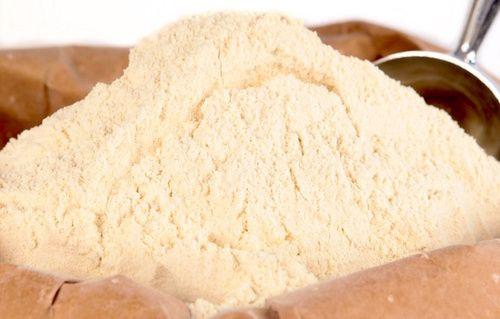Millet flour, obtained by grinding hulled millet, is rich in iron and magnesium, ideal for celiacs and excellent for both bread and cakes. Let's find out better.
> 2. Properties and use of millet flour

How millet flour is made
Millet flour is obtained by grinding the shelled yellow millet, Panicum miliaceum, un very ancient cereal originating from Asia and the Indian areas.
Widely used, as well as in Asia, also in Africa, it is still little known in Europe. Millet flour is made from specks of yellowish color that form inside a cob. The millet plant is about 1,5 meters tall, has long, narrow leaves.
Properties and use of millet flour
Millet is one of the most complete cereals, in fact, it contains an abundant quantity of iron, magnesium, silicon and phosphorus. Millet flour is gluten-free and this makes it perfect for celiacs, and is rich in starch, calcium, potassium, copper and zinc.
Thanks to the minerals it contains, it has a beneficial effect on tooth enamel, on hair, nails and skin.
Millet flour has a composition similar to that of wheat, although, as we have seen, it does not contain gluten. Instead, it contains vitamins of group A and B, it is nutritious, ideal for feeding children, for pregnant women and for those who carry out particularly demanding intellectual activities or for those with a weakened body.
Find out the difference between millet flour and wholemeal brown millet flour
Millet flour products
With millet flour it is possible to do bread, savory biscuits, sweets, meatballs, soups, bread sticks, biscuits and cakes. It is used mixed with wheat flour from 15 to 30% in the preparation or together with corn flour.
In Naples, around Carnival, the well-known was prepared with millet flour Migliaccio, a sweet cake, today prepared with corn flour.
Millet is easily found in shops and shopping centers, while millet flour can be made at home using hulled millet or can be found in specialized shops.
A recipe up your sleeve
Preparation of the millet bread: dissolve a cube of brewer's yeast in warm milk; mix the flours (300 grams of wheat and 200 grams of millet) with the salt and add a tablespoon of extra virgin olive oil, water as required and the yeast and milk mixture, then mix well.
Shape into a loaf, make a cross cut on the surface and let it rise for about an hour and a half. Bake the loaf at 180 degrees for 20 minutes.
The properties, nutritional values and calories of millet
| Honeyville


























